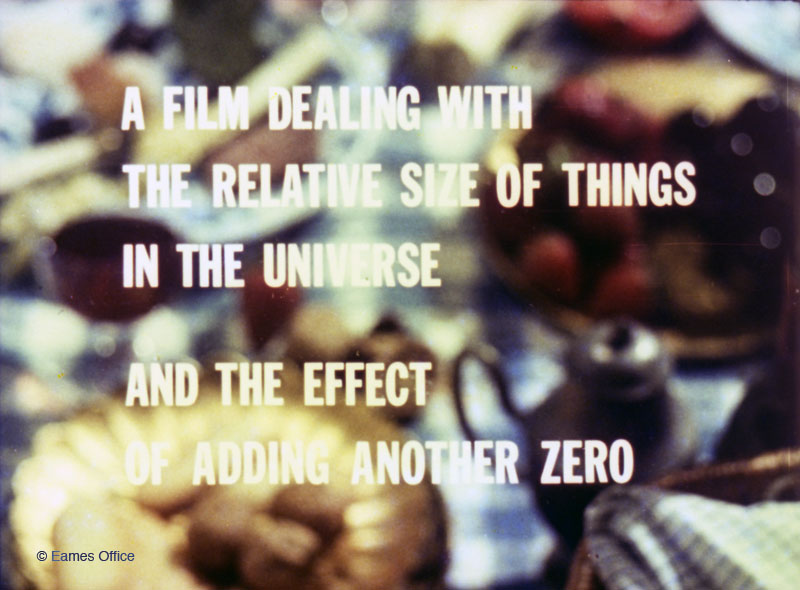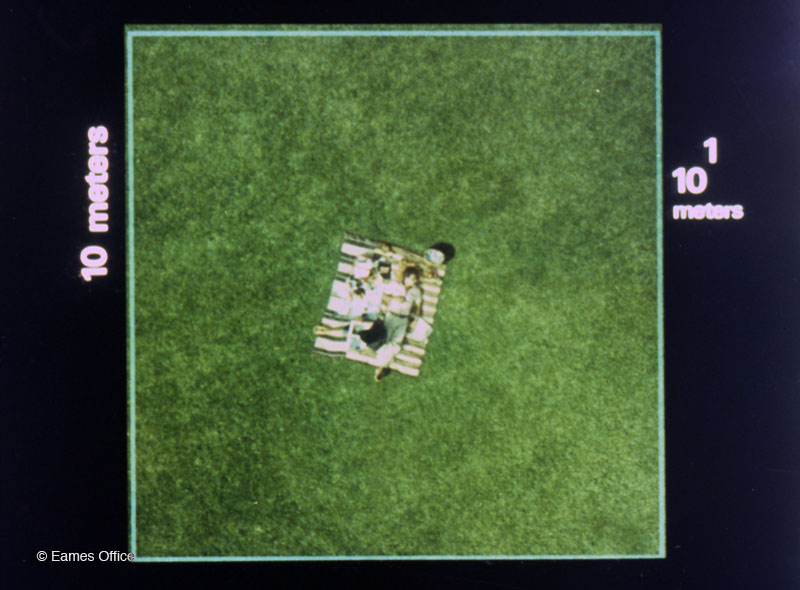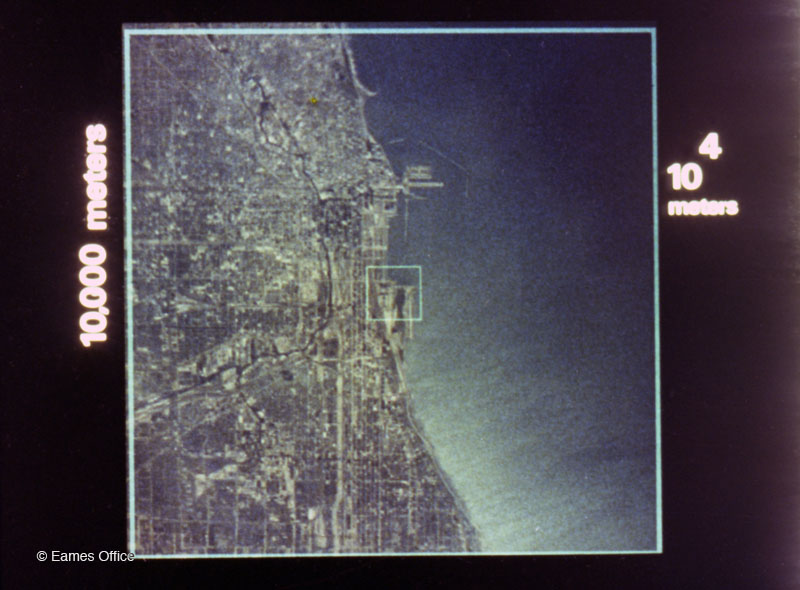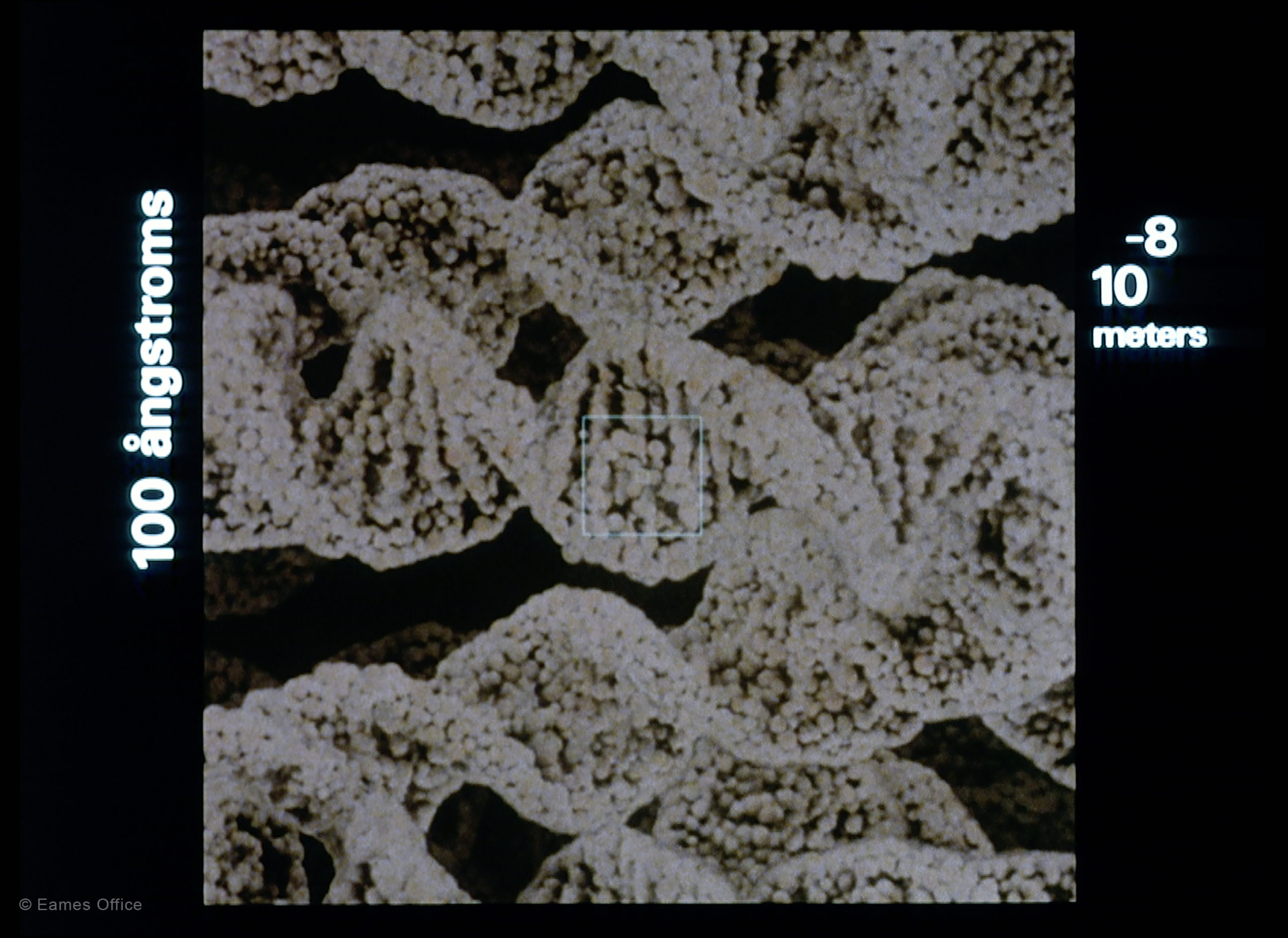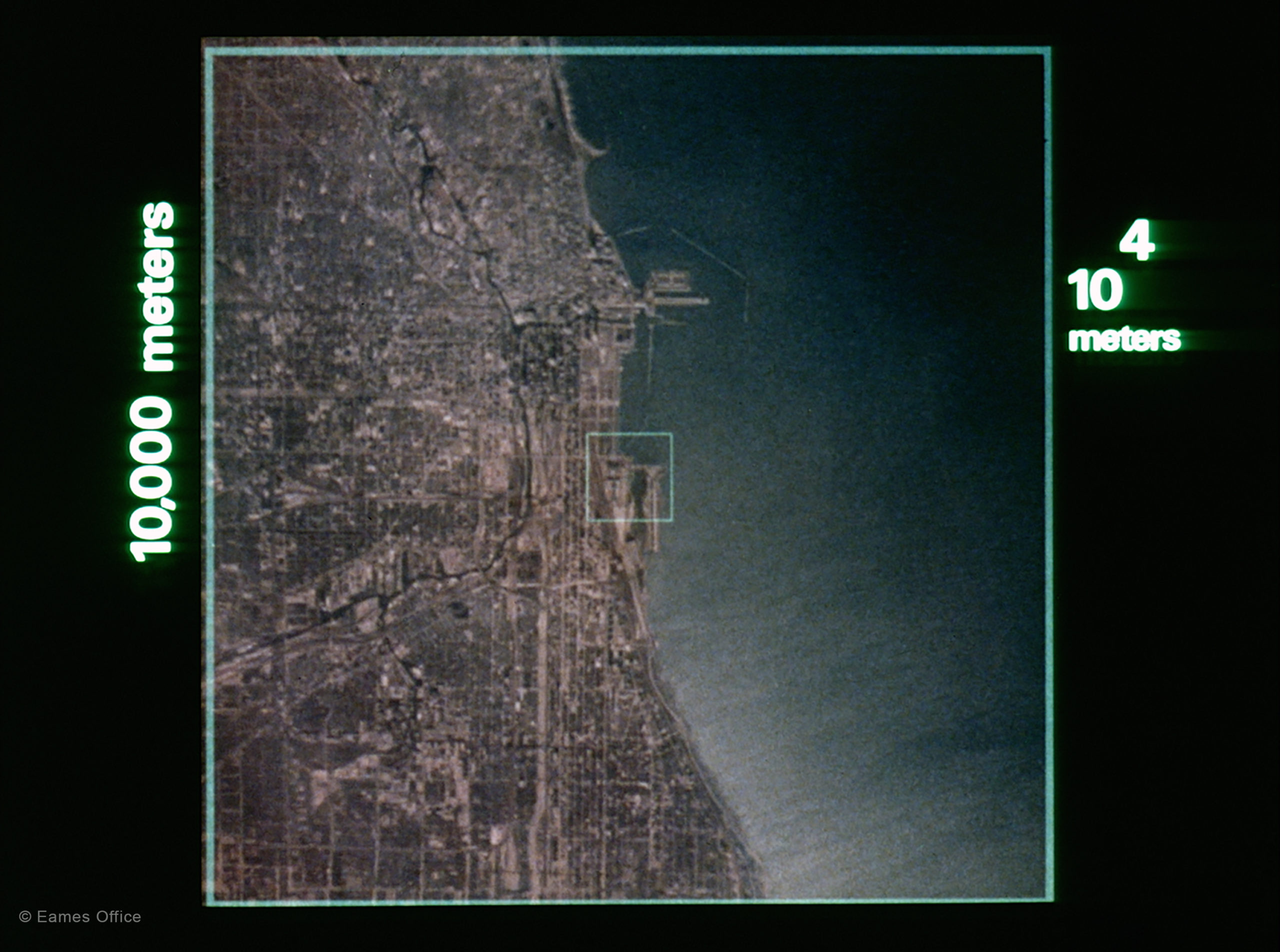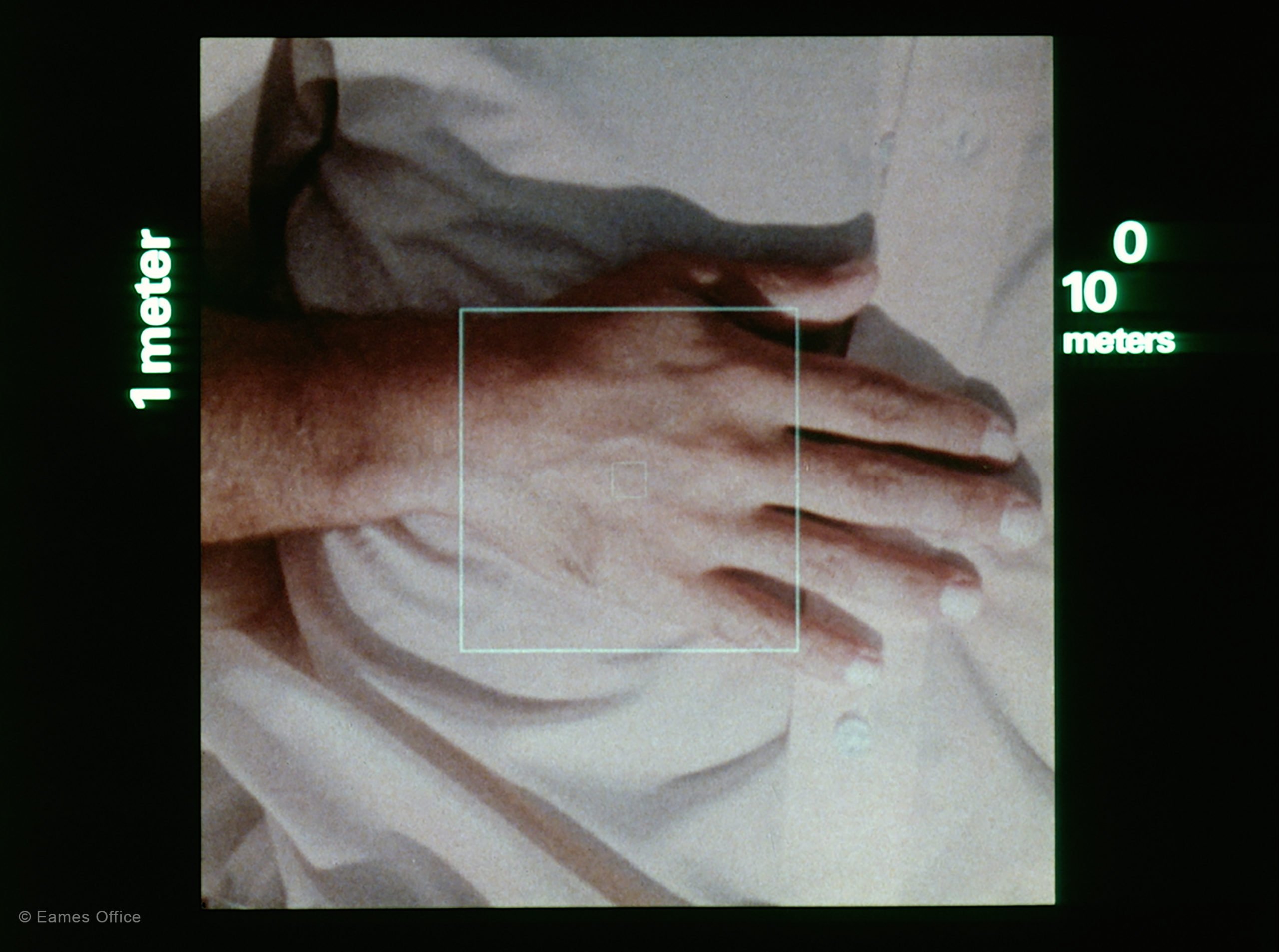Powers of Ten and the Relative Size of Things in the Universe
Produced ten years after the Rough Sketch this is an updated, finished version, which also reflects advances in theory and research that occurred since the idea for Powers of Ten was first developed. This version adds two powers of ten—a hundredfold increase—to each end of the journey into the universe, and to the return trip to the microstructure of the carbon atom in the human body. The site of the journey’s beginning was changed to a park bordering Chicago’s Lake Michigan, to allow the journey to approach the disk of the galaxy at approximate right angles. Powers of Ten was selected for preservation in the United States National Film Registry by the Library of Congress for being “culturally, historically or aesthetically significant.” Narration available in English, German, Japanese and Mandarin. Atlanta International Film Festival Gold Medal, 1970. U.S.A. Film Festival, 1971. Montreal Psychics Film Exposition & Festival, 1976. Council on International Non-Theatrical Events (C.I.N.E.) 1978 Golden Eagle. Greater Miami International Film Festival Gold Medal Scientific Research, 1978. 22nd Annual San Francisco International Film Festival Participation- Communication Competition, 1978. Music by Elmer Bernstein.
9 minutes
A ROUGH SKETCH FOR A PROPOSED FILM DEALING WITH THE POWERS OF TEN AND THE RELATIVE SIZE OF THINGS IN THE UNIVERSE.
A linear view of our universe from the human scale to the sear of galaxies, then directly down to the nuclear of a carbon atom. With an animated image, a narration and a dashboard, it gives a clue to the relative size of things and what it means to add another zero to any number. Music by Elmer Bernstein.
Powers of Ten is a 1968 documentary short film written and directed by Ray Eames and her husband, Charles Eames, rereleased in an updated form in 1977. The film is an adaptation of the 1957 book Cosmic View by Kees Boeke, and more recently is the basis of a new book version. Both adaptations, film and book, follow the form of the Boeke original, adding color and photography to the black and white drawings employed by Boeke in his seminal work.
In 1998, “Powers of Ten” was selected for preservation in the United States National Film Registry by the Library of Congress as being “culturally, historically, or aesthetically significant”.
1977
9 minutes. Color.
For more information please see the official POWERS OF TENwebsite.
Powers of Ten and the Relative Size of Things in the Universe is a linear view of our universe from the human scale to the farthest galaxies, and then directly down to the nucleus of a carbon atom. With an animated image, a narration, and a dashboard, it gives a clue to the relative size of things and what it means to add another zero to any number. Music by Elmer Bernstein.
1977
Powers of Ten is one of the Eameses’ best-known films. Since it was produced in 1977, it has been seen by millions of people both nationally and internationally. As with A Communication Primer and 2n (a 2-minute Peep Show from the exhibition, Mathematica), in this film, Charles and Ray employed the system of exponential powers to visualize the importance of scale.
When the Eameses came across the 1957 book by Kees Boeke, Cosmic View: The Universe in Forty Jumps, they decided to use it as the basis of a film investigating the relative size of things and the significance of adding a zero to any number.
Powers of Ten illustrates the universe as an arena of both continuity and change, of everyday picnics and cosmic mystery. It begins with a close-up shot of a man sleeping near the lakeside in Chicago, viewed from one meter away. The landscape steadily moves out until it reveals the edge of the known universe. Then, at a rate of 10-to-the-tenth meters per second, the film takes us towards Earth again, continuing back to the sleeping man’s hand and eventually down to the level of a carbon atom.
In 1998, Powers of Ten was selected for preservation in the United States National Film Registry by the Library of Congress as being “culturally, historically, or aesthetically significant.”
Learn about the importance of Powers-of-Ten thinking here.
9 minutes. Color.




